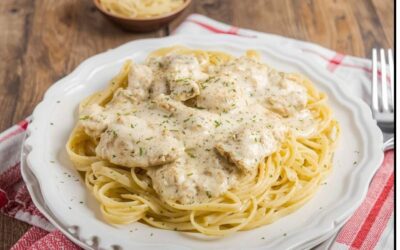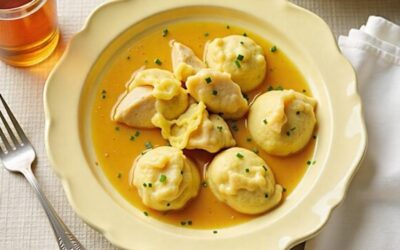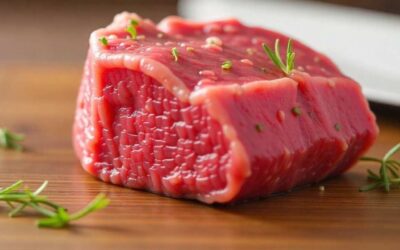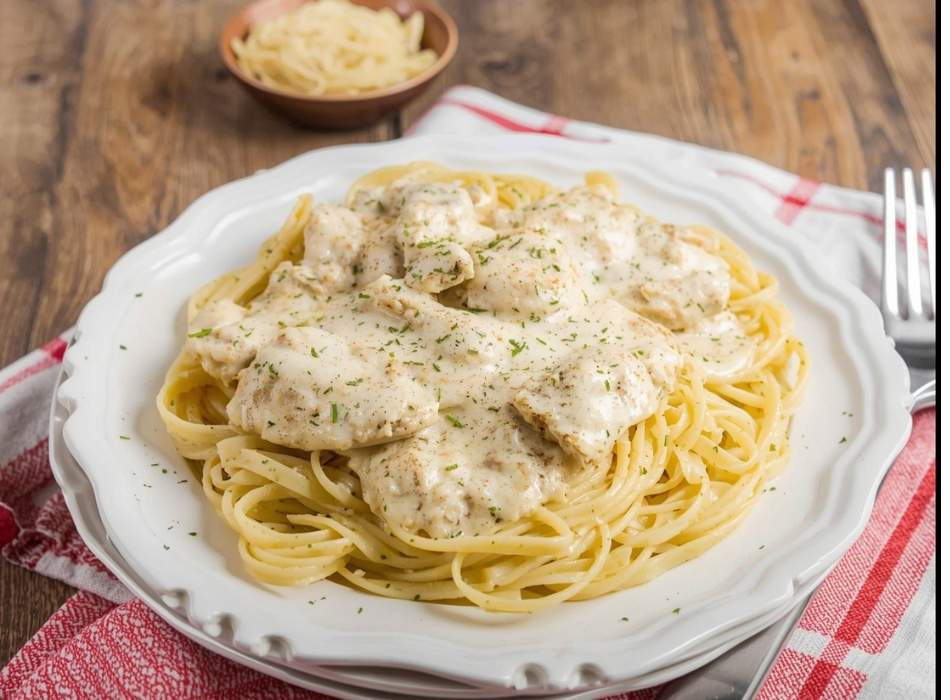There’s something magical about a recipe that gets passed down through generations, carrying with it the love and memories of family gatherings. Miss Gail’s Chicken Alfredo is one of those treasured dishes that transforms a simple weeknight dinner into something special. This isn’t your typical restaurant-style alfredo—it’s a home-cooked masterpiece that combines tender chicken, perfectly cooked pasta, and a rich, creamy sauce that will have your family asking for seconds.
Whether you’re looking to recreate a beloved family recipe or simply want to elevate your pasta game, Miss Gail’s approach to chicken alfredo offers techniques and flavor combinations that make all the difference. This recipe brings together traditional Italian cooking methods with American comfort food sensibilities, resulting in a dish that’s both sophisticated and satisfying.
The Story Behind Miss Gail’s Recipe
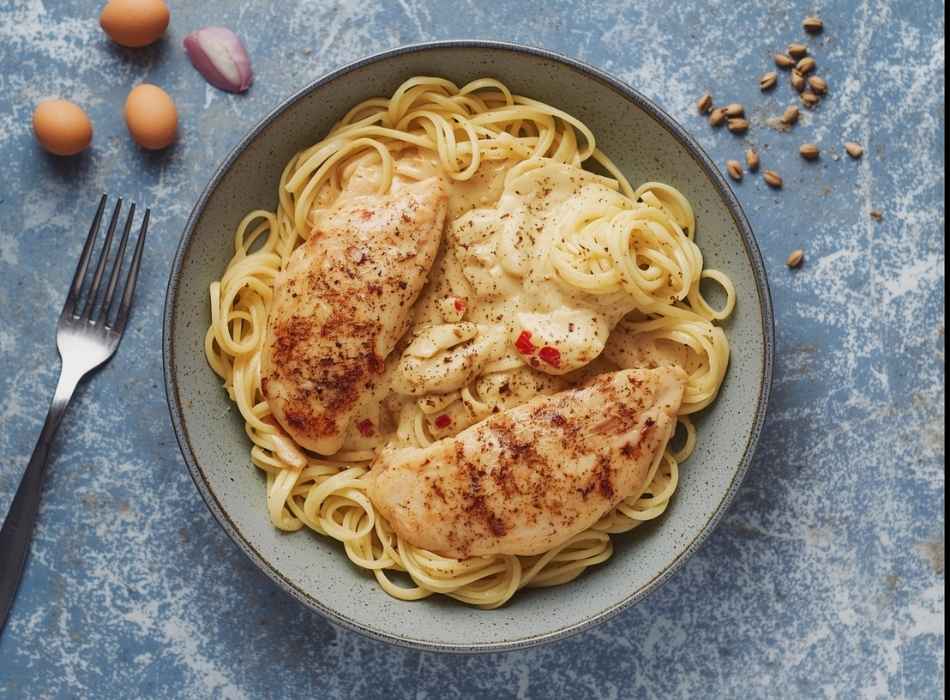
Family recipes often come with stories, and Miss Gail’s Chicken Alfredo is no exception. This particular version emerged from years of experimentation in a home kitchen, where Miss Gail perfected her technique through countless Sunday dinners and special occasions. What sets her recipe apart is the attention to detail in every component—from the way she seasons and cooks the chicken to her method for creating a sauce that never breaks or becomes grainy.
The beauty of this recipe lies in its balance. While many alfredo dishes can feel heavy or one-dimensional, Miss Gail’s version incorporates subtle flavor layers that keep each bite interesting. Her secret involves building flavors at each step, rather than simply combining ingredients at the end.
Essential Ingredients for Success
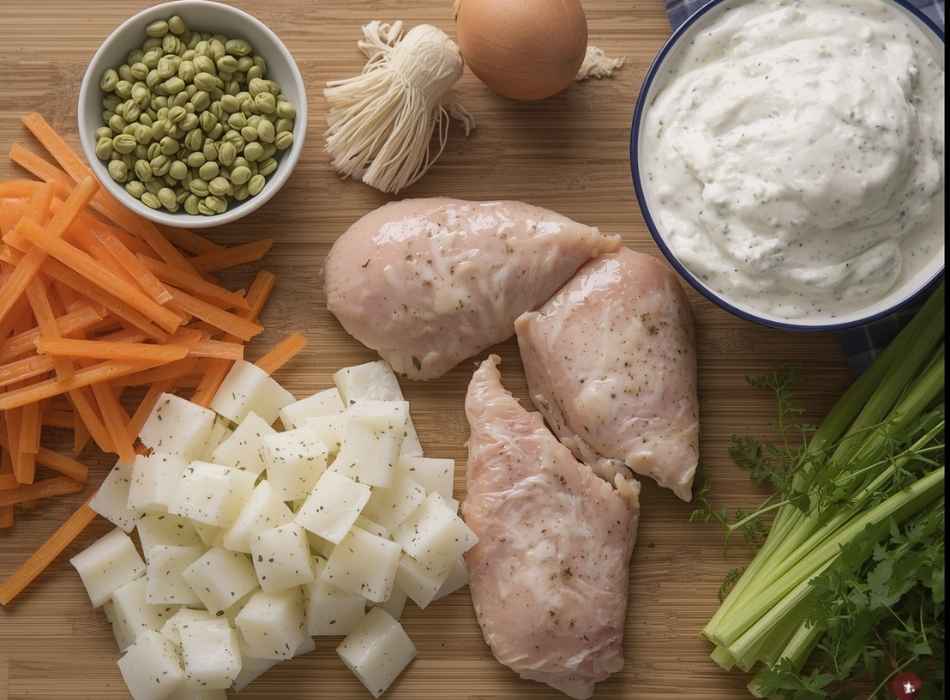
The foundation of any great chicken alfredo starts with quality ingredients. Miss Gail always emphasized that you can’t create an exceptional dish with mediocre components.
The Chicken Component
For the chicken, Miss Gail preferred boneless, skinless chicken breasts, but she had a specific way of preparing them. Rather than cooking them whole, she would pound them to an even thickness of about ¾ inch. This technique ensures even cooking and prevents the dreaded dry, overcooked exterior with undercooked interior that plagues many home cooks.
The seasoning blend for the chicken includes salt, freshly ground black pepper, garlic powder, and a touch of Italian seasoning. Miss Gail always lets the seasoned chicken rest at room temperature for about 20 minutes before cooking, allowing the flavors to penetrate the meat.
Pasta Selection and Preparation
While fettuccine is the traditional choice for Alfredo, Miss Gail occasionally used penne or rigatoni when she wanted the sauce to nestle into the pasta’s ridges. The key is cooking the pasta just shy of al dente, as it will finish cooking when tossed with the hot sauce.
Miss Gail always reserved a cup of pasta cooking water before draining. This starchy, salty water becomes crucial for adjusting the sauce’s consistency and helping everything bind together perfectly.
The Sauce Foundation
The sauce is where Miss Gail’s recipe truly shines. Her approach involves creating a proper roux-based foundation rather than simply melting butter and adding cream. This technique provides stability and prevents the sauce from separating.
Her ingredient list includes butter, flour, heavy cream, freshly grated Parmesan cheese, minced garlic, and a pinch of nutmeg. The nutmeg might seem unusual, but it adds a subtle warmth that elevates the entire dish.
Miss Gail’s Step-by-Step Method
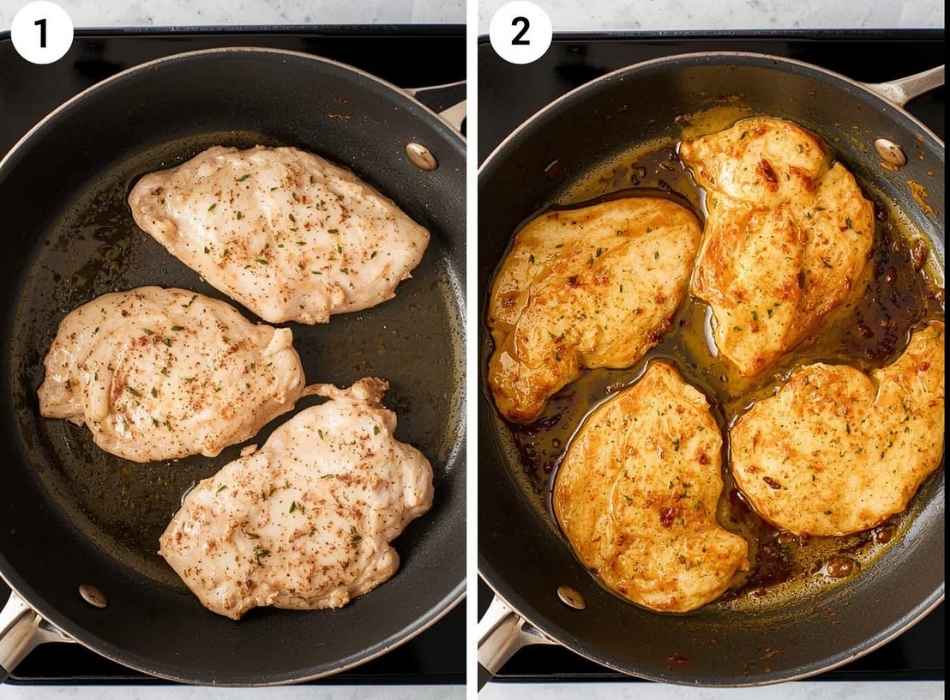
Preparing the Chicken
Start by preheating your oven to 200°F to keep the cooked chicken warm while you prepare the sauce. Heat two tablespoons of olive oil in a large skillet over medium-high heat. Once the oil shimmers, add the seasoned chicken breasts.
Cook the chicken for 6-7 minutes on the first side without moving it. This allows for proper browning and flavor development. Flip and cook for an additional 5-6 minutes until the internal temperature reaches 165°F. Remove the chicken to a cutting board, tent with foil, and let it rest while you prepare the sauce.
Building the Sauce
In the same skillet used for the chicken, reduce heat to medium and add three tablespoons of butter. Once melted, add minced garlic and cook for about 30 seconds until fragrant. Sprinkle in two tablespoons of flour and whisk constantly for about two minutes to create a light roux.
Gradually add the heavy cream while whisking continuously. This prevents lumps from forming and ensures a smooth sauce. Bring the mixture to a gentle simmer and cook for 3-4 minutes until it begins to thicken.
The Final Assembly
Remove the sauce from the heat and gradually add the grated Parmesan cheese, whisking after each addition. Add the pinch of nutmeg and season with salt and white pepper to taste. If the sauce seems too thick, add reserved pasta water one tablespoon at a time until you reach the desired consistency.
Slice the rested chicken into strips and add the cooked pasta to the sauce. Gently toss everything together, adding more pasta water if needed to achieve a silky consistency that coats the pasta without being gluey.
Professional Tips for Perfect Results
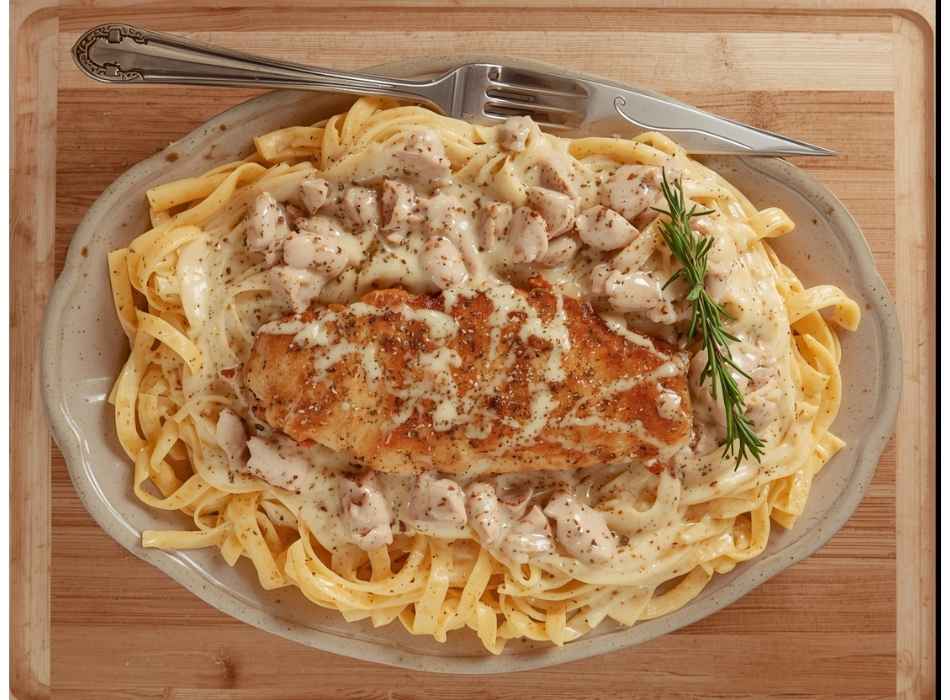
Miss Gail’s years of experience taught her several tricks that separate good chicken alfredo from exceptional chicken alfredo. Temperature control is crucial throughout the entire process. The sauce should never boil once the cream is added, as this can cause it to break or curdle.
When adding the Parmesan cheese, make sure it’s at room temperature and finely grated. Cold cheese straight from the refrigerator can cause the sauce to seize. Miss Gail often grated her cheese the morning she planned to make the dish, letting it come to room temperature naturally.
Timing is another critical element. Have all your ingredients prepped and ready before you start cooking. The sauce comes together quickly once you begin, and there’s no time to stop and grate cheese or measure cream.
Variations and Adaptations
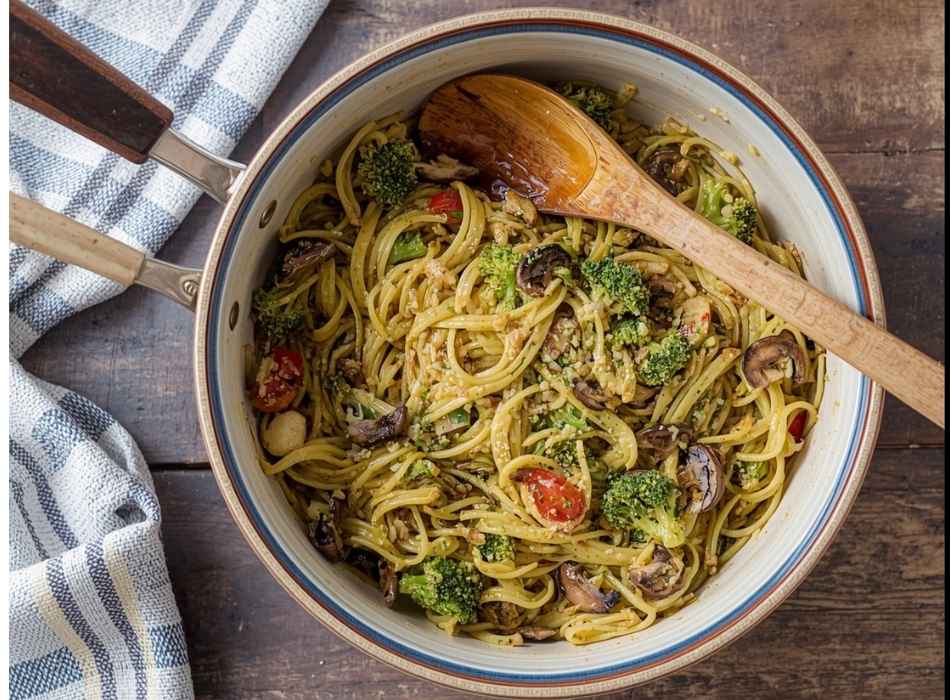
While Miss Gail’s original recipe is perfection on its own, she wasn’t opposed to variations for different occasions. For added vegetables, she sometimes included steamed broccoli or sautéed mushrooms. When using vegetables, she’d add them to the pasta during the final tossing stage to prevent overcooking.
For a lighter version, Miss Gail discovered that substituting half-and-half for heavy cream still produced excellent results, though the sauce wouldn’t be quite as rich. She also experimented with adding a splash of white wine to the garlic before adding the flour, which created additional depth of flavor.
Serving and Storage
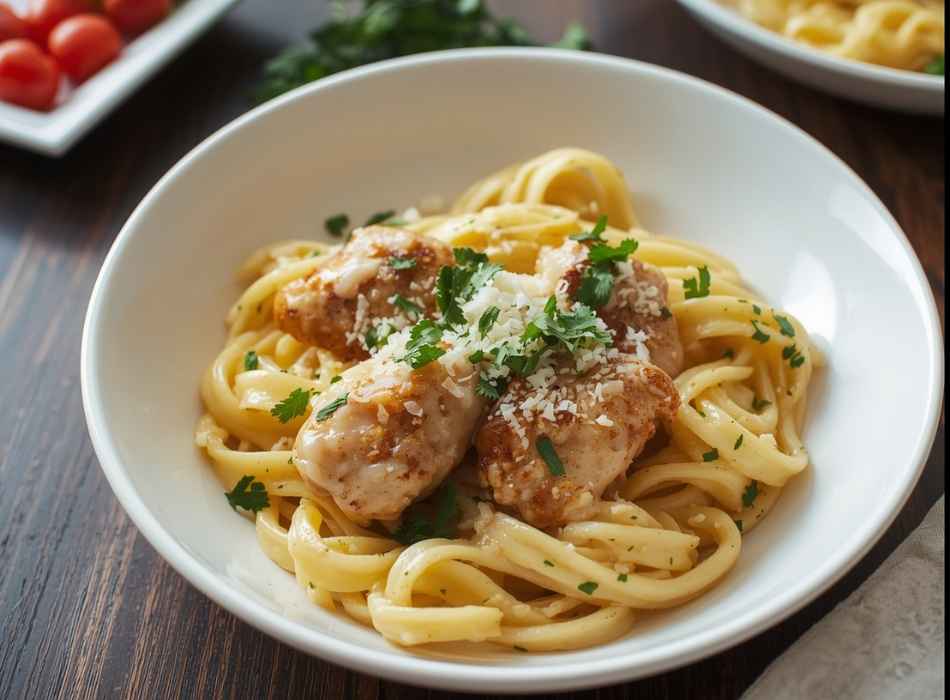
Miss Gail always served her chicken alfredo immediately after preparation, garnished with extra Parmesan cheese and freshly chopped parsley. She believed that pasta dishes are best enjoyed hot and fresh, when the sauce has the perfect consistency and the flavors are at their peak.
For leftovers, she recommended storing the pasta and sauce together in the refrigerator for up to three days. When reheating, she’d add a splash of milk or cream and heat gently over low heat, stirring frequently to prevent the sauce from breaking.
Why This Recipe Endures
Miss Gail’s Chicken Alfredo continues to be a family favorite because it represents more than just a meal—it’s a connection to tradition and the comfort of home cooking. The recipe’s success lies in its respect for technique while remaining accessible to home cooks of various skill levels.
The dish strikes the perfect balance between indulgence and comfort, making it suitable for both everyday dinners and special occasions. Most importantly, it’s a recipe that improves with practice, allowing each cook to add their touches while maintaining the essential elements that make it special.
Miss Gail’s legacy lives on every time someone takes the time to season their chicken properly, carefully builds their sauce, and brings family together around the dinner table. This chicken alfredo isn’t just about feeding people—it’s about creating moments and memories that last long after the last bite is savored.










